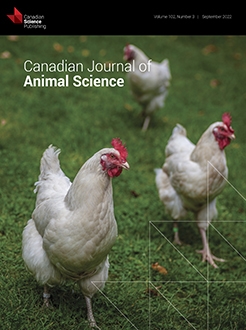This study considered the parameters of the halal market to evaluate different protocols for broiler electronarcosis regarding time to return of consciousness, bleeding efficiency, and carcass and meat quality at a broiler slaughterhouse. One hundred and eighty-four 43-day-old male broilers of the Cobb® strain were used. The experimental design used was completely randomized with 46 broilers for each protocol. The protocols used 80 V and 600 Hz, 50 V and 1000 Hz, 60 V and 1000 Hz, and 70 V and 1000 Hz. Time to return of consciousness, bleeding efficiency, bruising, presence of broken bones in pectoral muscle, and meat quality were evaluated. Birds subjected to stunning by the 50 V and 1000 Hz protocol showed the shortest time to return of consciousness after electronarcosis, and high incidence of breast hemorrhage. Birds subjected to the 60 V and 1000 Hz protocol had a higher percentage of broken bones in the pectoralis minor. The 50 V and 1000 Hz electronarcosis protocol fits better to the halal market due to the shorter time to return of consciousness and improved bleeding efficiency. This study suggests new proposals for stunning protocols to serve the halal market.
Cette étude a considéré les paramètres du marché halal afin d’évaluer différents protocoles d’électronarcose (ou étourdissement électrique) des poulets à griller en ce qui a trait au temps de retour à la conscience, l’efficacité de la saignée, et la qualité de la carcasse et de la viande dans un abattoir de poulets à griller. Cent quatre-vingt-quatre poulets à griller mâles âgés de 43 jours de race Cobb® ont été utilisés. Le design expérimental utilisé était complètement aléatoire avec 46 poulets à griller pour chaque protocole. Les protocoles utilisés : 80 V et 600 Hz; 50 V et 1000 Hz; 60 V et 1000 Hz; 70 V et 1000 Hz. Le temps pour le retour à la conscience, l’efficacité de la saignée, les contusions, la présence de fractures aux os dans le muscle pectoral, et la qualité de viande ont été évalués. Les poulets ayant subi le protocole 50 V/1000 Hz ont montré la plus courte durée du retour à la conscience après l’électronarcose, et la plus grande incidence d’hémorragie de la poitrine. Les poulets ayant subi le protocole 60 V et 1000 Hz avaient un plus grand pourcentage de fractures d’os dans le Pectoralis minor. Le protocole d’électronarcose 50 V et 1000 Hz convient mieux au marché halal puisqu’il a la plus courte durée du retour à la conscience, et la meilleure efficacité de la saignée. Cette étude suggère de nouvelles propositions en matière de protocoles d’étourdissement pour servir le marché halal. [Traduit par la Rédaction]





